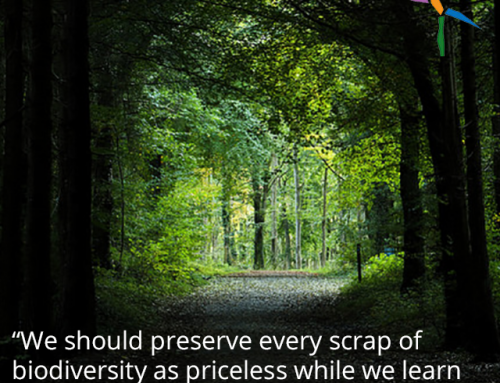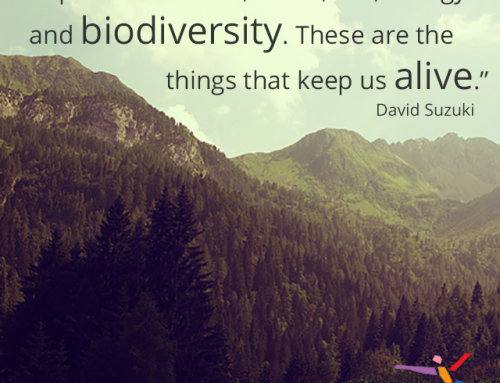No matter what your stance on consumerism, one thing we can most likely all agree on is that we like trees. Specifically, we like the oxygen they produce and we like the products that can be built from them, though for many people the love goes more deeply than just “what a tree can give.” The world’s forests are essential for the ongoing life of hundreds of thousands of species, plant life and medicine-forming flora. They’re also essential to the continuation of humans. Take some time today to get to know these ten facts about deforestation.
Fact One: Deforestation Can Still Be Green Land
When most of us think of deforestation, we think of trees and forests being turned into suburban communities or strip malls, but that’s not the most common (or even the most devastating) type of deforestation. Anything that destroys the natural habitat of a forest is deforestation. That can be stripping a forest for the purpose of arable land or pasture, both of which are becoming more common as population increases. Forests are also often stripped to create landfill and waste areas. It’s not just your local big box store shopping complex that’s guilty of causing deforestation. In fact, the single largest cause of deforestation is agriculture.
Fact Two: What’s In the Amazon?
Even if you take out all of the uncontacted, nomadic tribes that will be wiped out if the Amazon rain forest disappears through deforestation, the toll is still massive. Twenty percent of the world’s oxygen is produced in the Amazon rainforest. Twenty-five percent of cancer fighting organisms are found in the rain forest. Unfortunately, the current statistics imply that within a century, there will be no rainforests at all on planet Earth.
Fact Three: We’re Looking at You, America.
America has five percent of the world’s population, but uses thirty percent of the world’s paper. While paper isn’t the only (or the largest) source of deforestation, every piece of paper that you don’t use is a piece of a tree that isn’t destroyed. On average, a person in the United States uses 700 pounds of paper per year.
Pro Tip: Have you ever considered working towards becoming a tree-free home (or partially tree-free)? Here are our tips on how to do it.
Fact Four: Junk Mail and Marketing Mail, We’re Looking at You
A not insignificant amount of that paper is tied up in junk mail and marketing mail that, in many cases, you really don’t want to receive to begin with. On average, forty-one pounds of junk mail is sent to every adult individual in the United States each year. Forty-four percent of that junk mail goes unopened entirely, and individuals in America spend over $275 million dollars to dispose of junk mail.
Pro Tip: There are ways to reduce or eliminate junk mail. Get the tips on how to do it.
Fact Five: Your Diet Choices Can Decrease Deforestation
The natural instinct is that managing paper use is the most important thing that you can do to help decrease deforestation. In actuality it’s your diet that can have the biggest impact. While arable land needs to be controlled, the least efficient and often most devastating type of deforestation is the type required to graze cattle and other meat animals. By reducing the amount of meat you eat in your diet and thereby reducing the demand for meat, you’ll help reduce the need to clear forests. Nobody’s saying that you need to go vegetarian! Try just cutting back from having meat with every meal.
Pro Tip: Keep it simple. Start by just trying out Meatless Monday.
Fact Six: You Actually Just Can’t Replant a Forest
Once a forest is gone, it’s gone. You can replant the trees, but you’ve lost the entire ecology around the forest. A forest is made up of the interconnected ecology between trees, flora, fauna, insects and animals. Once all of the latter is gone, the former on its own isn’t nearly as powerful.
Fact Seven: Burning Trees is Worse Than Burning Coal
And we all know that burning coal is pretty bad. Firstly, as we talk about this, it’s important to know that the most common way that forests are destroyed is through a “controlled burn.” You may have read that electricity produced by burning plant material (referred to as biomass energy) is considered an important renewable, green form of energy. That’s still true, but biomass energy was never intended to include whole trees or whole forests. The last two years of research has proven that burning tress to create electricity actually increases carbon pollution. So while you’re creating as much if not more pollution as fossil fuels, you’re also destroying important ecosystems.
Fact Eight: The Sizes Will Boggle You
How much forest is the planet losing? According to National Geographic, forests still cover 30% of the land on earth. But each and every year, human activity costs us 29,157 square miles of forest (that’s the area of the country of Panama). That’s a rate of forest loss of about twenty football fields every minute.
Fact Nine: Income Inequality Exists in Tree Use, Too
According to the World Resources Institute, 1.6 billion people rely on forest products for their livelihood. But only twenty-two percent of the world’s population uses half the world’s timber and seventy-two percent of the world’s paper.
Fact Ten: It Isn’t Just the Amazon
Africa and Asia (specifically eastern Asia) are also experiencing massive rates of deforestation.
Did we miss a fact about deforestation that you really, really feel that we should have shared? Tell us about it on the social media channels below.
Facebook | Twitter | Instagram | Tumblr | Pinterest | Google+
Photo Credit: Moyan Brenn via Flickr






